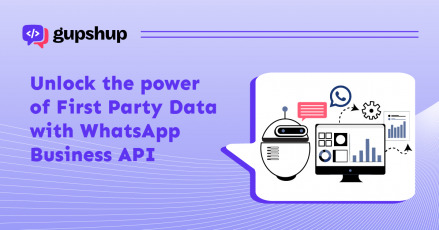Rethinking Cost Per Lead : Why So Many B2B Marketers Chase False Leads

Statistical models in sports and marketing attribution have a lot in common. Both are technologies that improve forecast accuracy.
Marketers make huge strides in improving their lead and demand generation program when they can better predict how many leads they’ll generate and which ones will close.
The benefits include reducing the cost per lead, marketers make better bets with their time and money, generating quality leads.
In this post, we’ll report industry patterns around lead generation and discuss how marketing attribution improves the effectiveness of money spent in generating and qualifying leads.
What Cost Per Lead Measures
Cost per lead is a performance indicator for marketing’s ability to target the right audience, increase conversion rates and reduce the cost of qualifying leads. And when you reduce the cost of qualifying leads you help the sales team close more deals. Sales effort is expensive, which is why it’s so important to minimize cost per lead..
Cost per lead is not how much you paid for e-book downloads or clicks, it’s how much you paid for your inbound efforts PLUS the amount paid for qualifying and setting appointments.
Marketers need to view cost per lead as the cost per appointment set. To ignore this would be to optimize for hits and not wins.
In order to improve win rates, marketers need access to the kind of statistics (data) that help them understand their lead generation program.
This data is not easy to come by, nor was it accessible without the help of technology, until recently.
It’s exactly like the kind of work being done right now in the NBA to track every move of every player on the court. With access to new kinds of data, teams are racing to understand each individual’s tendencies, strengths and weaknesses. With it, teamwork and playcalling improves for maximum probability for successful shots taken, which translates into more Ws.
Marketing attribution is the same. By accessing new information about leads, such as the customer journey that includes offline and online touchpoints, marketers gain a deeper understanding of what leads are doing. Once marketers know what leads are doing, they can shift offers, messaging or time of outreach to maximize the chances of engagement.
Like the NBA coaches that build and improve team performance using the latest data gathering technology, marketers build and improve the appointment rates for lead lists.
Marketing Attribution And Cost Per Lead
Data signals are the ingredients for lowering cost per lead and understanding which leads are simply not worth chasing.
At the minimum, marketers need to be able to track the number of leads they are generating and understand sales cycle length.
Across many industries, this may be more difficult than it seems. In a survey of 370 B2B marketers, we asked how many leads a month they generate and which attribution model they use. The chart below shows monthly average leads by attribution model.
What we see is that as leads volumes increase the complexity of attribution models increase. Simple single touch, or no attribution model at all, is associated with smaller volume leads while more advanced multi-touch and custom models are associated with high volume leads.
As marketers deal with more and more data from their demand gen activities, they implement advanced attribution models in order to gain a more granular view of conversion data to separate good campaigns from bad campaigns.
Next, we organize lead volumes by industry.
High volume leads for the technology industry is not surprising as these companies likely invest heavily in growth and demand. As with new companies, the mantra is growth at all costs.
Does this mean that certain industries should adopt certain attribution models due to high volume leads? Perhaps, but our sampling method resulted in higher response rates from marketers in the technology and software industry, thus average lead volumes from other industries may be strongly influenced by outliers or small sample sizes that don’t representative a true average.
Marketers use attribution solutions to manage their spending and decrease cost per lead. Executives want to know how many leads and opportunities they’ll generate for X dollars.
A multi-touch attribution model provides an accurate measure of cost per lead when measuring on a per-campaign or per-channel basis. As we’ve seen in a previous post, marketers are investing in numerous channels and marketing activities, and understanding CPL per campaign is essential to fine tuning the marketing machine.
By understanding different CPLs by campaign or channel, AND tracking first touch all the way to sales closed, it means marketers have a clear understanding of where their best leads come from — the ones which cost less to attract, qualify and close.
By using attribution data, marketers now understand the origin and movements of their leads. And like the coaches in the NBA who have access to a new set of player data, and are using it to design better teams, marketers are designing better demand programs with the help of attribution data.
Conclusion
Without access to the kind of data that illustrates the customer journey, through omni-channel attribution, marketers chase false leads in the long term. Having only a limited view of leads, demand programs are imprecise in generating qualified leads and forecasting growth.
Marketers want to know what they will get from each channel when they invest, this isn’t easy to predict, but attribution data gets marketers one step closer.
Source – https://www.bizible.com/blog/what-is-cost-per-lead-in-marketing



